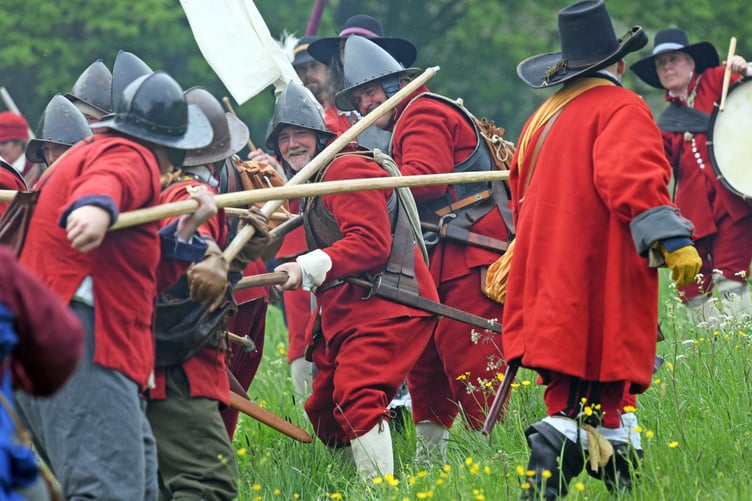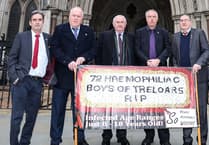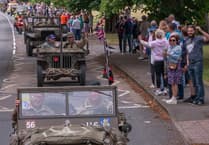GUNFIRE boomed out and soldiers rampaged through the town with pikes as the Civil War made a dramatic return to Alton over the bank holiday weekend.
The Battle of Alton, held for real on December 13, 1643, was re-enacted twice on Sunday and Monday as hundreds of members of the English Civil War Society descended to entertain and educate big crowds of spectators.
A living history display was held in the Church of St Lawrence churchyard throughout both days while the soldiers brought the confrontation between Royalists and Parliamentarians to life.
The military manoeuvres began with a drill display opposite the Curtis Museum in the High Street, before the re-enactors assembled for a march from Normandy Street through the town centre to the Flood Meadows.
Once there the two sides brought out their artillery, muskets and long pointed sticks for the re-enactment of the large battle on that fateful day.
The event climaxed in what would normally be a peaceful place, the churchyard of the Church of St Lawrence.
It was the scene of the finale of that 17th-century day of fighting, a skirmish which ended with the death of Royalist leader Col Richard Bolle as he and his men staged a desperate last stand within the church.
As the re-enactment came to an end, with dead blue-clad Royalists strewn across the churchyard, Col Bolle was carried out of the church on a stretcher made from wooden boards, past the holes made by musket balls in 1643.
The event was organised by Alton Town Council, and Kemp & Stevens funeral directors made a donation towards the cost of staging it.
Local English Civil War Society members Phil Roberts, Tony Cullen and Phil Davies said: “The English Civil War Society have always enjoyed events in Alton, where the public have always turned out in great numbers to witness the recreation of events that occurred over 350 years ago in this market town – events that changed the course of English history.”
Alton town mayor Cllr Pam Jones said: “It is wonderful to bring history to life with these re-enactment demonstrations for the community to enjoy.”
The event was planned before the conflict in Ukraine and the town council recognised this was a sensitive time to depict war, albeit in a historic context.
As a result a collection was held for the Disasters Emergency Committee throughout the event.





Comments
This article has no comments yet. Be the first to leave a comment.